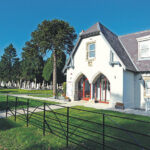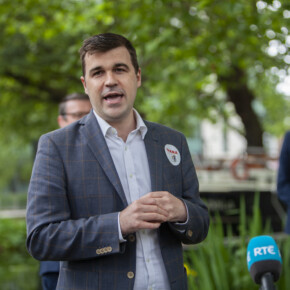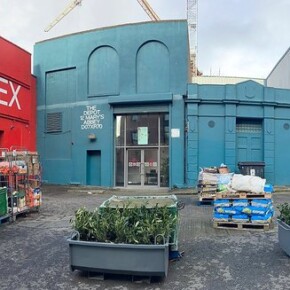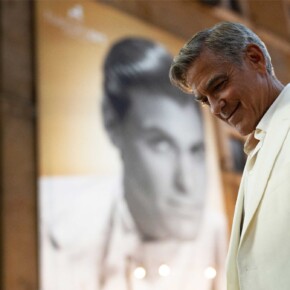Deansgrange Cemetery: a fascinating place to visit
Dublin People 08 Oct 2016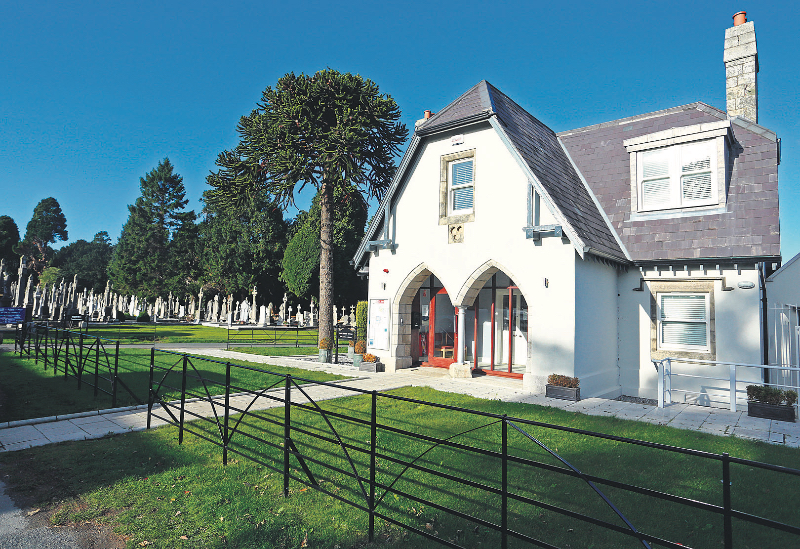
THE Irish Times recently ran a piece entitled ‘50 Irish graves to visit before you die’.
And, of course, Deansgrange Cemetery was right there near the very top of the article.
The piece highlighted the fact that the ashes of the revered comic Dermot Morgan, who died in 1998, are interred in an understated plot at the cemetary.
In an homage to the comedian, the article stated: “Down with that sort of thing. What sort of thing? Death from a heart attack at 45, that’s what.
“The final episode of Father Ted was barely in the bag when Dermot Morgan was felled out of the blue.
“Two decades later the much-loved TV comedy has travelled into the pop-culture stratosphere. Morgan’s or a flavour of the outrageous character he was, and played, sit in the Joker’s Chair in Merrion Square Park, which has to be one of the best memorial statues anywhere, ever.”
Since it first opened in 1865, over 150,000 people have been buried there.
It is, together with Glasnevin and Mount Jerome, one of the largest cemeteries in the Dublin area, occupying 70 acres.
The other luminaries who now rest in the famous cemetery reads like a who’s who of Irish life, from politicians and soldiers to artist, writers and poets.
Amoung the dead are John McCormack (1884–1945), world-famous tenor; the 15 local men of the Kingstown Lifeboat Disaster in 1895 who died in an ill-fated attempt to rescue the Palme and Todd Andrews (1901–1985), the republican political and military activist and civil servant.
Poignantly the Angels’ plot used from 1905 to 1989 to bury children holds the remains of an estimatd 750 children who are buried here.
Cemetery staff renovated the plot around 2008.
During the 1916 Rising, the cemetery saw the burial of about 50 people connected to the events.
They were either innocent victims, Irish republican volunteers or British soldiers.
Eleven known victims of the Leinster tragedy are also buried in the cemetery.
The RMS Leinster was torpedoed by a German submarine 19km from Dún Laoghaire in 1918.
Alan Bell (1858–1920), a magistrate and a member of the British Secret Service, who was assassinated by the IRA during the Irish War of Independence is buried there.
Another fascinating character who calls Deansgrange his last home is Francis Browning (1868–1916), cricketer and President of the Irish Rugby Football Union.
Another well-known name is that of Taoiseach John A Costello.
In June of this year a large crowd braved the rain to attend the first annual commemoration of the former Taoiseach in Deansgrange Cemetery.
The assembled, including members of the Costello and Cosgrave families, the judiciary (past and present), the Bar of Ireland, the Oireachtas, and the four Dublin local authorities.
They gathered in the rain to hear an address by Dr David McCullagh, RTÉ journalist and author of ‘The Reluctant Taoiseach: A Biography of John A Costello’.
Organiser Cllr Barry Ward welcomed people to the event by commenting on how John A Costello is not as well remembered as he should be.
This is despite his significant achievements and contributions to political and legal life.
David McCullagh drew parallels between the inter-party government and the present administration, noting that Costello’s greatest contribution was perhaps the skill with which he kept his two coalitions together.
John A Costello, a successful barrister, was one of the first legal advisors to the newly formed Irish Free State, and served as Attorney General to WTCosgrave from 1926 to 1932.
He was Taoiseach from 1948 to 1951 and 1954 to 1957 as the leader of Ireland’s first inter-party government, and he was responsible for declaring Ireland a Republic in 1948.
He is buried with his wife and son in Deansgrange Cemetery, a peaceful spot where history lies.
- Deansgrange Cemetery: a fascinating place to visit


